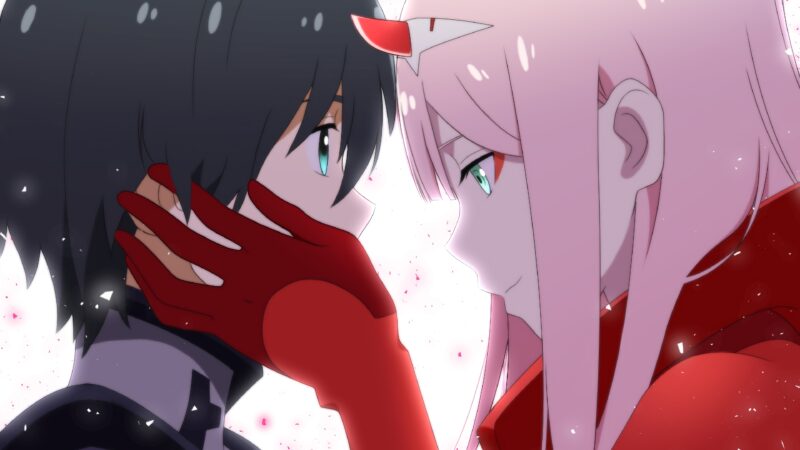
Darling in the Franxx was hyped when it released in 2018. Animated by Trigger and Cloverworks, the anime had a simplistic style the supported moments of intense action. Most of the story focused on the characters as they struggled to survive, understand their purpose, and grow up. As a mecha, Darling in the Franxx leans closer to Eureka Seven than to Neon Genesis Evangelion with its themes as I will explore. In fact, as an old Eureka Seven fan, I would consider Darling in the Franxx as a Eureka fanfiction. This isn’t fair to Darling, but the story hits many of the same notes. Of course, I cannot speak of any mecha story without touching on the mecha stories that changed the genre forever, Neon Genesis Evangelion. Evangelion deconstructed the genre, which had focused on political conflict, war, and the effects of both on people with series like Gundam. Mecha roughly falls into two families after that: Gundam and Eva. The Eva family dives deep into psychology (not to say Gundam doesn’t) and the challenges of growing up. Basically, it mixes high-school coming-of-age stories with big robots and dystopia wars. I’m oversimplifying the mecha genre, which extends back to the roots of anime. Evangelion marked a change in approach and acts as a reference for most mecha stories that followed it. Darling in the Franxx is no exception.
This article assumes you’ve seen the anime, so expect spoilers. I will review the plot before I explain what I see as problems with the story. Then, we will look into how Darling in the Franxx channels Eureka Seven and elements of Evangelion. Finally, I will discuss if Darling in the Franxx will be remembered.
Untangling the Plot, Darling
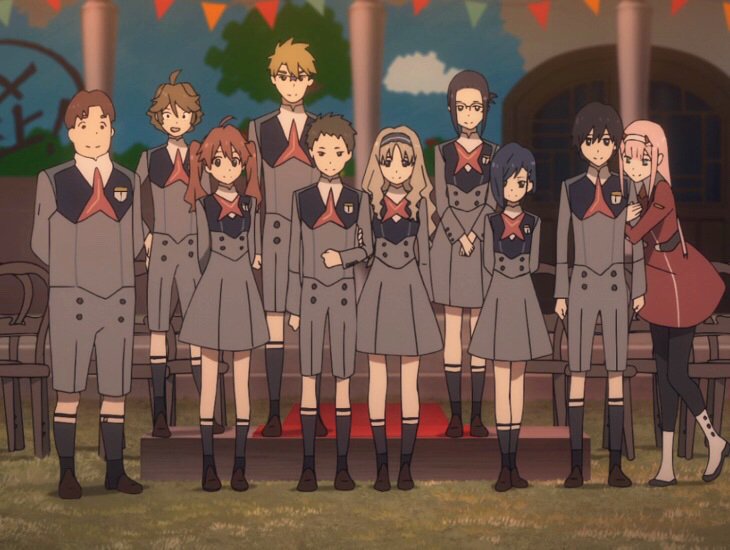
Mecha anime like convoluted stories that tangle themselves to obscurity. Darling falls into this problem for reasons I will discuss later. Like most mecha, Darling starts in a dystopian future. Earth has been turned into a desert. Humanity achieves immortality, but immortality comes at a cost to the planet, their safety, and to what it means to be human. Driven by an energy crisis, a group of scientists who call themselves APE, introduces technology that allows humanity to tap the Earth’s mantle. This new magma energy allows humanity to develop technology even further. The developments lead to discovering immortality. However, immortality soon led to population problems just as the promises of magma energy turn dark. In response, humanity gives up its ability to reproduce, and magma energy transforms Earth into a desert world. The deep mining required to tap the mantle awakens an ancient race of creatures that had been buried deep in the Earth. The humans call these giant creatures klaxosaurs because they tended to resemble dinosaurs. Humanity’s war against the klaxosaurs devastates civilization, forcing the remnants of humanity into mobile cities called plantations. APE takes over these cities and develops mecha to defend them from the klaxosaurs. These mechs need to be piloted by artificially created children who still retain their reproductive abilities. Klaxosaurs share the majority of male and female human DNA, and the mecha are developed from klaxosaurs. This is why reproductively capable males and females (called parasites) must work together to drive the mecha. All adults have lost their reproductive abilities which bars them from being able to interface with the mecha. These children are created with short lifespans and isolated from the rest of the plantation because of their unfettered emotions.
Squad 13 of Plantation 13 acts as an experimental group for the grand plan APE and the lead mecha developer Dr. Franxx develop. Dr. Franxx, however, quietly works against APE for his own interests. He creates Zero Two, an elite parasite, using genetic information from a humanoid klaxosaur he had encountered. Zero Two shows exceptional fighting capability, but she kills the male pilots she connects to. She drains them of their life force. Dr. Franxx subjects her to torturous experiments. He uses the data to later create the 9 series of parasites, clones of Zero Two who can control the mechs alone or in androgynous pairs. Over the course of the experiments, a young parasite Code 016 (he names himself Hiro) encounters Zero Two. They escape together and he’s exposed to her blood when she hurts herself and he licks the wound. Dr. Franxx clears their memories and pushes Hiro into Squad 13. Unlike the other squads, Squad 13 is given little oversight, allowing the children to enter puberty with all the relationship messiness and confusion that involves. Squad 13 stands in isolation, so they know nothing about human sexuality, male-female differences, or other cultural guides. They stand as a case study of how humans develop with the question of how this impacts their fighting capabilities.
Squad 13’s caretakers, two former parasites who were allowed to enter adulthood, are charged to intervene only in extreme circumstances. However, the pairings for each of the mechs sets the stage for heartbreak and conflict.
Hiro had named each of the members. Normally, parasites answer to their code number. Ichigo, a girl who is named as the leader of the squad, loves him. Even though Hiro no longer remembers Zero Two, when he encounters her again, he falls in love with her. He views Ichigo as a sister, which causes a lingering, slow heartbreak for Ichigo as she watches Hiro and Zero Two grow closer. Because Hiro had been exposed to Zero Two’s blood early in his life, he develops a resistance to her. He is the only one able to pilot a mech with her without dying.
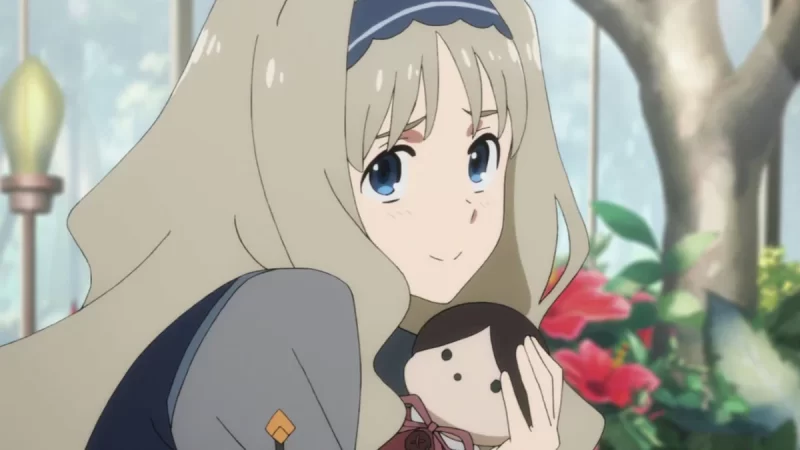
One of the major plot points happens when the kind-hearted Kokoro finds a book about pregnancy and childbirth during one of Dr. Franxx’s experiments. They travel to one of the few remaining beaches and encounter the ruins of a town. The book interjects sex, which was unknown to the teens, into the mix. Zero Two, in an off-hand statement, suggests she knows about sex and children. She’s not able to have children, which is a dark suggestion the story leaves hanging. Kokoro and the boy Mitsuru fall for each other. This relationship hurts Kokoro’s former co-pilot Futoshi who had also fallen for her. Kokoro initiates the relationship with Mitsuru and the sexual encounter. That night ends with Kokoro pregnant, which will form a plot beat later. Kokoro and Mitsuru marry, but this development drives APE and its chairman, who everyone calls Papa, to end Dr. Franxx’s experiment.
While all of this relationship and growing pains happen, the klaxosaur war continues to escalate until APE orders all the plantations to travel to the source of the klaxosaur: the Gran Crevasse. At some point, humanity had sealed off the mine with a dome. Deep under it lives the klaxosaur princess, the being that Dr. Franxx had taken DNA from to create Zero Two, the 9s, and other experiments. The princess controls all the klaxosaur, which turn out to be mechs of a sort. As Hiro and Zero Two go deeper in the mine, they discover Dr. Franxx and APE had also buried a massive mech designed to end the war. However, the princess takes control of it by connecting through Hiro. At that moment, a strange alien race called the VIRM, which is led by Papa, attacks. The princess uses Hiro and the klaxosaur forces to defend the Earth against VIRM. However, Papa and Dr. Franxx had embedded a trap inside the mech which activates to capture and drain the klaxosaur princess. Hiro gets caught in the trap too.
Zero Two manages to fight her way inside the mech and free Hiro. She takes control and fights the VIRM to a retreat. The mech absorbs her consciousness. She leaves Hiro and her body on Earth and pursues Papa and the VIRM to protect Hiro and her friends in Squad 13. Hiro doesn’t realize this. He believes she had gone catatonic after the battle until he connects to Zero Two’s consciousness when he touches his horns to hers. Hiro had been changing into a klaxosaur through his regular contact with Zero Two. The mech that Zero Two had been merged with fights the VIRM near Mars. Soon after Hiro discovers this, a massive klaxosaur spaceship is found. Squad 13 and the remainder of 9s decide to go with Hiro to save Zero Two. The ship and a massive klaxosaur fleet launch and the final battle ensues. Hiro eventually makes contact with Zero Two inside the giant mech and unleash their combined powers to drive the VIRM fleet into a hidden gate that opens to their home galaxy. Back on Earth, Zero Two’s body turns to stone. Hiro and Zero Two chase the VIRM. Fast forward several years. Squad 13 had married and had children. More survivors had been found in stasis chambers in the remaining plantations. Hiro and Zero Two finally made it to the VIRM homeworld. Hiro nears death after such a long battle. Using a klaxosaur bomb, Hiro and Zero Two sacrifice themselves to end VIRM and Papa. Zero Two’s statue crumbles, revealing a cherry tree sampling.
In the final scene, the cherry tree grows and ages. A city appears around it as the centuries pass. A reborn Hiro sits at the base of the tree, reading the fairy tale book that preserved his and Zero Two’s distant struggle. A reborn Zero Two trips over the tree root, and they meet again for the first time.
The Not so Darlings
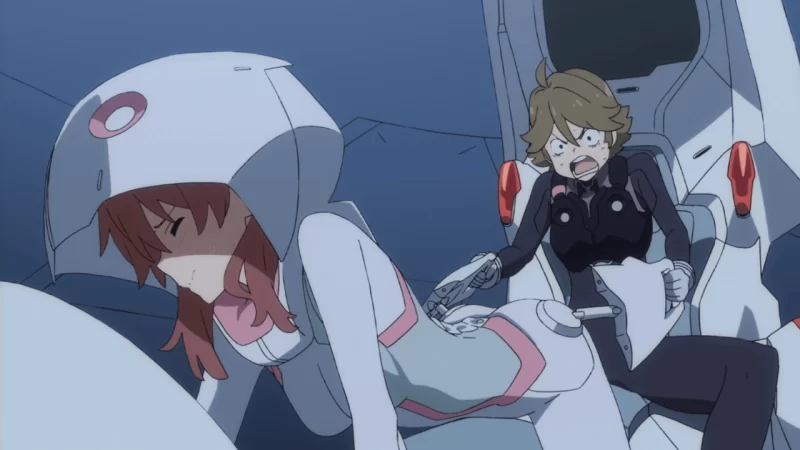
Darling in the Franxx suffers from a too-short run time. The anime has 24 episodes compared to Eureka Seven’s 50 episodes. It drops many interesting ideas and character explorations. The plot suffers from the limited number of episodes with the VIRM. APE and Papa give only a single hint that they have a plan beyond the defeat of the klaxosaur, mentioning the idea that humans should abandon their bodies. The VIRM appear without any other foreshadowing or hints. While the VIRM aim to be a surprise, their sudden appearance doesn’t fit into the plot. More hints and foreshadowing needed to be done beyond the obscure statement made by Papa. The sudden need for humans and klaxosaur to join forces against the VIRM feels like a cope out. It avoids the potentially messier ending of Zero Two and Hiro facing off against APE and the remaining human forces. VIRM would’ve worked well if more time had been spent pointing toward them.
The short run time also hurts Zero Two’s character development. In one scene, she had a nightmare. The soldiers she had consumed while piloting her mech climb out of a black void in the floor. They crawl toward her and she retreats. Hiro wakens her, and she clings to him in terror and guilt. The story then drops this thread. Eureka Seven has a similar scene with Eureka, who feels guilty for the human deaths her existence indirectly causes. The story takes its time exploring and resolving this guilt and fear, using her guilt and fear as a source of conflict which eventually draws her and Renton closer together. Darling in the Franxx just drops this character beat. Zero Two doesn’t seem troubled by it afterward. The story needs a longer run time to pick up this thread, develop the VIRM hints more, and explore the other themes. Futoshi, for example, loves Kokoro and has his heart broken when she falls in love with Mitsuru. He stands in as the priest during their wedding, but his healing process isn’t explored any further. Likewise, Ikuno is a lesbian with a one-sided love for Ichigo. She has a scene with Ichigo where she reveals her struggle with being different and how it hurts her fighting ability in the mechs. Ichigo accepts her as a friend, but can’t love her the same way. Ikuno pairs with Futoshi, but the interplay between these two broken hearts isn’t explored. Ikuno, at the end, is shown holding hands with Naomi, one of the parasites kept in cryogenic storage when deemed unfit to pilot. A little more development would’ve been welcome here too. Expanding Darling in the Franxx to 50 episodes would’ve given the writers space to fix the VIRM problem and pick up these and other character threads.
Despite my somewhat ordered summary of the plot, the story tangles into near incoherence as it tries to stuff everything into 24 episodes. Dr. Franxx and APE’s conflict remains obscure. As the story nears the end, events happen quickly and with little windup. While it adds a frantic pace that fits the battle situation, the pace left me, the first time I watched, confused and wondering “where did that come from?” On my second watch, the story untangles a bit better, but the foreshadowing and logic remain thin.
Finally, Zero Two’s final form as a giant mech doesn’t work for me. Skin exposed in space…my suspension of disbelief has limits.
How Does Darling Fit in?
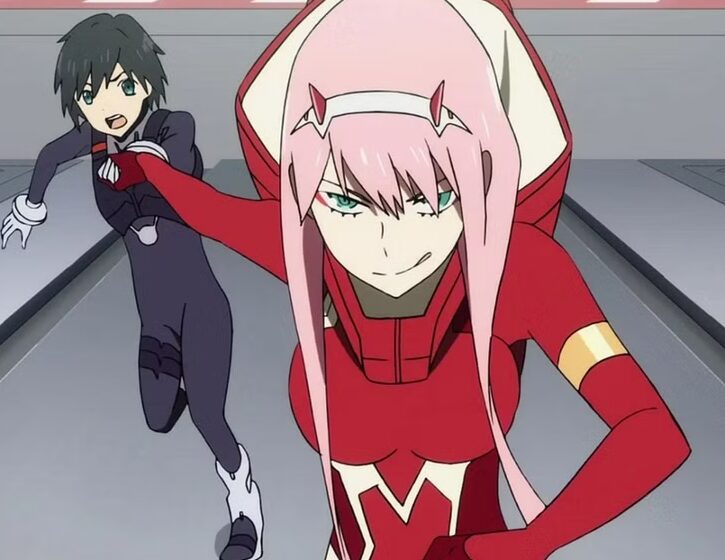
Darling in the Franxx shares many beats with Neon Genesis Evangelion and Eureka Seven. All three deal with troubled paternal relationships. Evangelion‘s Shinji hates his father and hates that he hates him. To say Shinji and his father are estranged is an understatement. Part of this comes from Shinji’s myopic, selfish perspective. He doesn’t care that his father shoulders the fate of humanity. Eureka Seven‘s Renton doesn’t hate his father, but he resents living in his father’s shadow. His father died protecting humanity, and Renton, while he understands the importance, resents how his father had left him and his sister alone. Darling has Papa, which acts as a distant and disconnected father not unlike salaryman fathers who must work ridiculous hours. Papa, however, leads into the other shared beat: one-world government. In all three stories, the world unites to face the existential threat humanity faces. All three stories treat the idea of a single world government ambivalently. It’s not all good nor all bad. In Evangelion, NERV acts as the defacto world government as it protects humanity. Although people live in a state of constant war and a war-time state with all the media control that involves, people are largely left alone by NERV. Eureka Seven, likewise, has a government under the Sage Council which controls the media and polices, but again, is largely too busy with the Corolian problem to micromanage. Papa and APE, on the other hand, micromanage everything. Papa, unlike the faces of the other story governments, has a cult of personality surrounding him. The cult taps into historical cults of personality such as the ones that surrounded Stalin, Mao, Xi, and, yes, Trump. Papa captures the paternalistic messaging Mao, especially, had. Papa, however, tolerates some kickback from Hiro and Zero Two as long as they work toward APE’s goals. Papa isn’t necessarily malevolent. He has a different idea of what’s beneficial: the existence beyond physical existence. Darling doesn’t work enough to sketch what this existence is.
All three stories involve a girl’s sudden appearance changing the course of the protagonist’s life. Shinji has Rei. Renton has Eureka. Hiro has Zero Two, or, perhaps more accurately, Zero Two has Hiro. But the story is told mostly from Hiro’s view. This theme originates from Japanese folklore. Stories like The Snow Lady features the sudden appearance of a girl that heralds a change in a man’s life. Mecha, of course, isn’t the only genre that embraces this story beat. Harem and romantic comedies like to use this call to adventure, to reference Joseph Campbell’s Hero’s Journey framework.
Darling shares a choking scene with Evangelion. In The End of Evangelion, during one of Shinji’s mental breakdowns, he chokes Asuka to see if the real world has returned. Zero Two strangles Hiro when she had succumbed to her despair, just as Shinji had given into his despair. Unlike Shinji, Zero Two awakens before she kills Hiro. Zero Two, Hiro, Shinji, Eureka and, to a lesser degree, Renton derive their sense of purpose from piloting their mecha and fighting. Their respective stories explore the problem of external purpose with differing answers to the problem. Hiro and Zero Two, similar to Renton and Eureka, change their purpose from piloting to please Papa to piloting to protect those they love. Shinji never finds any purpose.
All three stories use the enemy to fight the enemy. This theme traces to Gundam. Is it right to become like your enemy to defeat them? Is it right to be as destructive if it ensures your survival? Evangelion dives deep into the problem of instrumentality, of using people as a means to an end. Eureka develops the problem of becoming your enemy in the context of its overarching theme of change. Darling glosses over the instrumentality and becoming your enemy themes. The themes remain as a background element. But Darling works better when it’s a slice-of-life. It falls apart when it tries to be more Evangelion and less Eureka Seven. And that’s Darling’s problem. Near the end it moves away from what made it interesting, the slice-of-life in a dystopian war-torn world. Eureka Seven also does this well, but from the angle of older, scarred people trying to cope. Darling shows the scarring process, but it fails to commit to it. Its shared beats with Evangelion and Eureka Seven places it between them. Unfortunately, as I’ve discussed above, Darling suffers from not having enough space to do what it was trying to do, and dilute itself by taking too many beats from Evangelion and Eureka Seven.
Will Darling Leave a Legacy?
Darling in the Franxx is at its best when it focuses on its mecha, dystopian slice-of-life. When it tries to become Evangelion, the story falls apart. Darling has disappeared after the initial hype. It’s been 6 years since its release. Eureka Seven has disappeared too, but it’s been nearly 20 years since that anime released. Evangelion continues to be watched nearly 30 years later because of how it shifted mecha anime. Darling stands as an interesting, if flawed, entry in the mecha and slice-of-life categories. It speaks to the problems of growing up and to the difficulty of male-female relationships from an angle most anime don’t take. While it flirts with a high-school setting, the reality of war and of isolation sets the story apart. Squad 13’s isolation from anything that doesn’t relate to war explores how puberty without guidance can be confusing and troubling. They don’t know what kisses are or similar cultural expressions. Darling could’ve done more with this. Few stories I’ve seen touch on this topic.
Will Darling leave a legacy? With its fans, certainly! Eureka and Evangelion still resonate with me. But will Darling leave a legacy in mecha? I’m sure the story will inspire another mecha story down the road just as Eureka seems to have inspired Darling. Darling in the Franxx has its problems, but it also does many things well. I look forward to see what stories it may inspire.

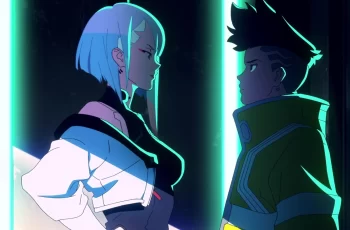
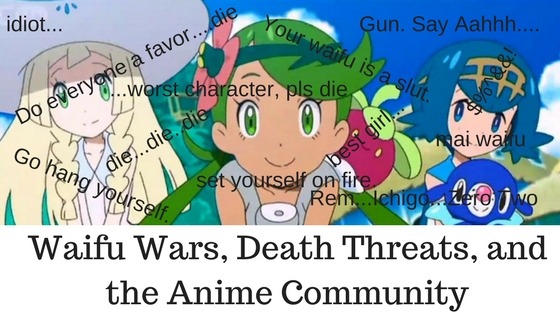
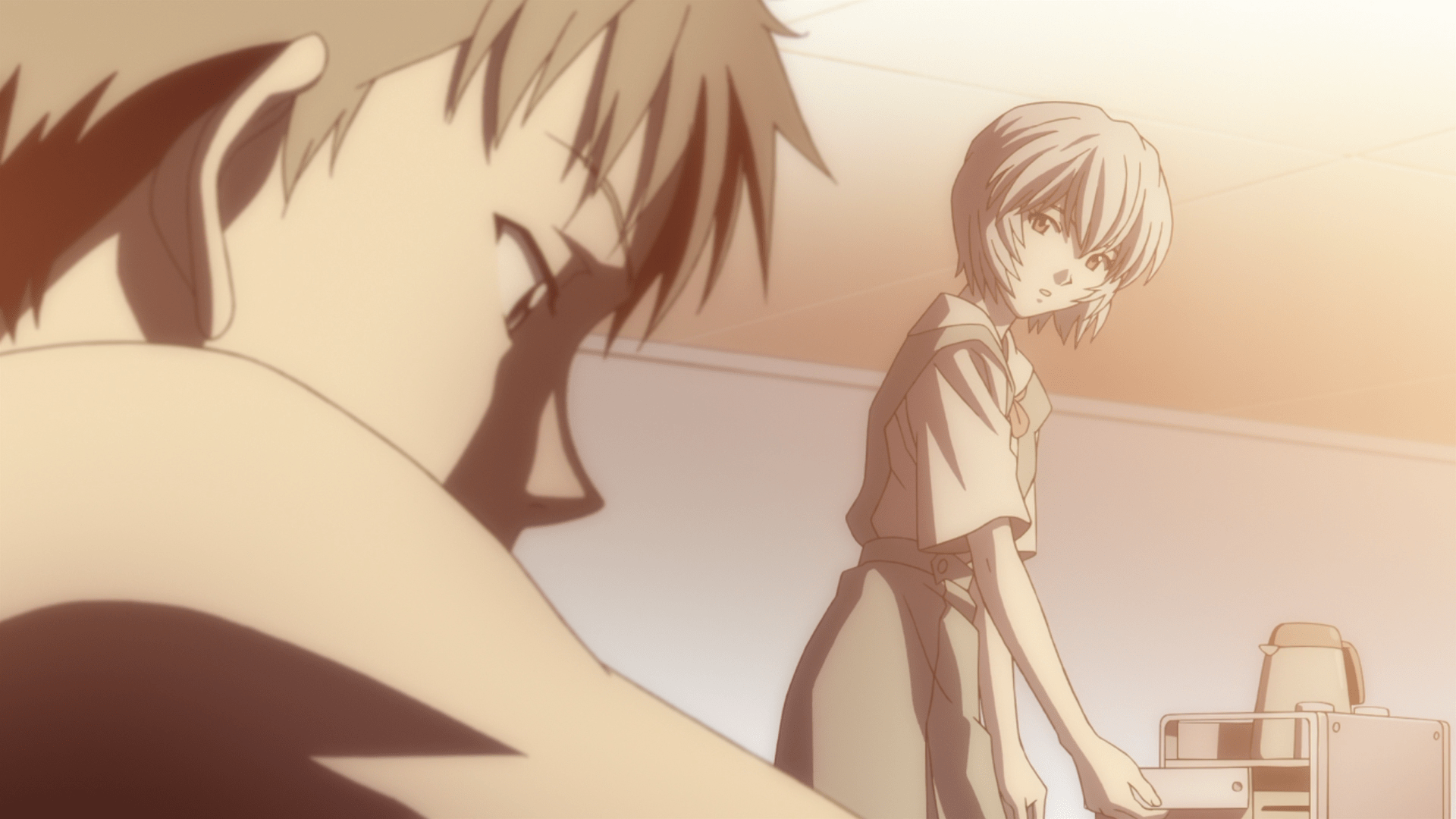
I just started the show yesterday actually, so perfect timing.
Your essay seems really detailed so there’s probably spoilers in it huh? I guess I’ll have to wait to read it…
But also.
“Oh yes, let’s team-pilot this robot together to save humanity! How do we make this technology work? Well, as innocent prepubescents, the way this amazing tech works is by going doggie-style with you right up behind me in my spandex and you’ll grab steering controls that come out of the sides of my splayed buttcheeks and that way our minds can meld and it’ll be ‘like you’re inside of me.’ Yep, THAT’S how we’ll defeat them robokaiju.”
If you thought Code Geass camera angles were pervy, then you’re in for quite a.. erm, ride.”
The gratuitous slow pans up Every. Single. Girls’. Exposed a** and more(!) is like the writers are a bunch of kids stuck in their “let’s play doctor” phase exploring all sorts of creative scenarios where a boy and girl somehow mutually end up in “accidentally” sexual positions.
So that’s my first impression. Oh yeah, that and robots with Sonic the Hedgehog style eyes and faces and talking mouths.
Did I miss any details I should know before watching more? 😅
I’ve been experimenting with longer form articles that contain spoilers, such as this one.
You’re right about the camera angles and the designs of the, uh, cockpits. I didn’t spend too much time discussing those angles and the slow pans, which in all fairness is done to the mecha too, because they are so blatant. But these elements offer an interesting contrast to the characters’ general lack of sexual awareness and isolation from what would be considered proper norms.They don’t understand why piloting the mecha in such a dynamic affects them for a good portion of the story. The audience, however, does, and this could create a strange sense of sexual superiority among the younger audience. Which, in danger of over-generalizing otaku, would be a unique and rare experience.
What else should you know? As I write in the essay, the run time isn’t long enough so the story will feel rushed near the end.
Eureka Seven may not be an internet sensation like Darling in the Franxx was, but Eureka Seven: AO and the Hi-Evolution film trilogy show there’s some segment of the fandom that’s still willing to follow the series. It’s a lot closer to Evangelion in terms of longevity if not legacy.
I still can’t believe it’s only been six years since Franxx ended! (I thought it was much longer.) I had to stop watching early on because the story was too slow for me. The synopsis you provided–as convoluted as it sounds–might have caught my interest. Eureka Seven was not any simpler in my recollection, but I found Renton’s struggles, his infatuation with Eureka, and the worldbuilding were much more compelling.
You make a good point. I didn’t care for AO or the Hi-Evolution films, but I should revisit them now that I have some distance.
Eureka Seven was just as convoluted. Mecha likes those sort of stories! I agree that Eureka Seven has a more vibrant, developed world. Franxx doesn’t give us many glimpses of the world outside the plantation or how the other plantations function. But, as I mention in the article, Franxx doesn’t have enough time to develop its story.